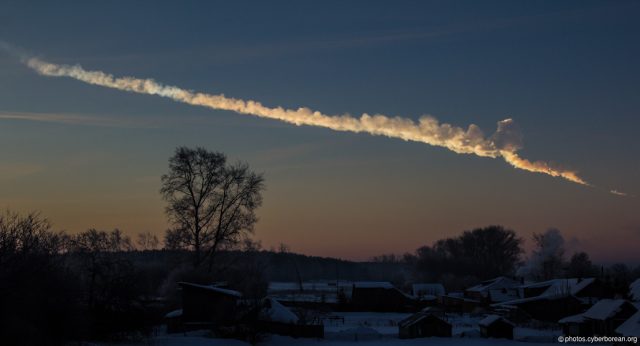Revealed: Secrets of the “dash-cam” meteorite that rocked Russia
Ars Technica » Scientific Method 2013-11-06

The asteroid impact that burst over Chelyabinsk, Russia on the morning of February 15 has provided a huge collection of new data that scientists have been analyzing since. This week, three papers, two in Nature and one in Science, describe new aspects of the meteorite’s airburst, building the most detailed forensic picture that we have of the events of that morning.
First reports of the Chelyabinsk airburst came from a plethora of dash-cams that caught the event. For the first time, a meteorite impact was recorded widely on camera, a consequence of technological advance and (presumably) increasingly litigious or bad Russian drivers. Alongside the dash-cam recordings, the fireball and the transient shadow that it cast was recorded across the region by fixed CCTV cameras. And looking back at Earth from space, the trajectory of the fireball was observed in satellite imagery.
The brightness of the fireball has provided an estimate of the energy of the airburst, equivalent to an explosion of more than 500 kilotons of TNT, many times greater than the Hiroshima atomic bomb. Similar estimates of the size of the explosion were obtained earlier this year from the array of infrasound detectors operated by the Independent Nuclear Test Ban Treaty Organisation, which maintains an array of nuclear bomb monitoring equipment.
Read 10 remaining paragraphs | Comments




